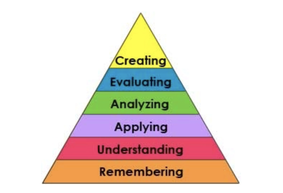|
. ArchivesCategories |
Back to Blog
September 26th marks the start of National Teach Spanish Week, a celebration of Spanish teachers sponsored by the American Association of Teachers of Spanish and Portuguese (AATSP), which also serves to raise awareness of the importance of Spanish in schools and to recruit teachers.
I want to celebrate this week by remembering my first Spanish teacher, Sister Judith Murphy at Saint Scholastica High School in Chicago. In the mid 1970s, long before the term HL learner existed, Sister Judith understood that I was different from other students and laid out a specialized course of study for me. I can still recall that very first day of high school when she pulled me aside and told me that I would not spend my freshman year conjugating verbs in Spanish 1, or even Spanish 2. Instead, she would work with me to develop my reading and writing skills so that I could take advanced culture and literature courses during my sophomore and junior years. Long before a pedagogy of HL teaching existed, Sister Judith Murphy already knew what to do: she saw me for who I was, embraced my strengths, and tended to my needs with “cariño” and "respeto". My route to becoming a Spanish teacher was long and circuitous and included detours such as a Math and Computer Science major at Loyola University of Chicago with a minor in Italian and French, followed by a Ph.D. in Linguistics at the University of Illinois at Urbana Champaign. Eventually, I became a professor at California State University, Long Beach, where I worked for thirty years. It was there, as I taught linguistics to hundreds of students such as myself – immigrant children who straddle two languages and cultures – that I found my way to teaching Spanish to bilingual Latinos and came to understand the transformative power of HL teachers. Sister Judith Murphy embodies that power, as described by Professor Anna Mendoza in her blog: Empowering teachers is necessary for empowering students. Teachers must understand and transform the possibilities inside and outside the classroom as active agents, in order to lead students to do the same. I invite you all to celebrate this week by thanking a transformational language teacher – of Spanish or any language – that made you who you are today. And let us know how this teacher empowered you by responding to this blog.
0 Comments
Read More
Back to Blog
What is the most important lesson you have learned in the past year on remote teaching? When asked this question at a recent conference, Florencia Henshaw singled out the importance of creating a sense of community of learners. I couldn't agree more. In this entry I'd like to tell you about a framework and a particular application that have proven very useful to me in this regard. Though originally developed for the online environment, this framework and application can support community building and collaborative learning in face-to-face teaching, as well. The framework: The Community of Inquiry Developed for computer mediated communication by Randy Garrison, Terry Anderson, and Walter Archer, the Community of Inquiry (CoI) Framework (pictured above) identifies three essential elements in the educational experience. Cognitive presence is defined as "the extent to which the participants in any particular configuration of a community of inquiry are able to construct meaning through sustained communication" p. 89). Social presence is "the ability of participants in the Community of Inquiry to project their personal characteristics into the community, thereby presenting themselves to the other participants as `real people' (p. 89. Social presence supports collaboration, which is essential for there to be cognitive presence. The third element, teaching presence, pertains to the design and facilitation of the teaching experience, including content selection, activities, assessments, etc. This is function primarily the domain of the teacher, though learners can also play a role in this. The application: Digital powerups Travis Thruston describes this application and its connection to CoI as follows: Simply stated, digital powerups are keywords from Bloom’s taxonomy that are displayed as hashtags and associated with corresponding prompts in online discussions...At its core, CoI requires social interaction or the co-construction of knowledge which must be centered in a learning environment that encourages discourse and community building as a means of engaging students in an educational experience. Specifically, the digital powerups strategy was designed to empower students with both choice and voice which is an effective way to engage students in course activities. Research shows that most discussion board prompts target the levels of "understanding" and "knowledge" in Bloom's Taxonomy. Digital powerups can help teachers formulate prompts at higher levels of the taxonomy, thereby leveling-up learners' cognitive and social presence, as well as use of language. The digital powerups below are based on Sandra Cisnero's short story My Name. In my class, students can answer any combination of powerups that add up to seven points. I would love to hear your ideas for how to use digital powerups to promote cognitive and social presence in HL and mixed classes. Also, be sure to share other insights and tips on remote teaching, or teaching in general, from your experiences this past year. Maria Carreira |
 RSS Feed
RSS Feed


